 |




|

 |
|
|
Yuhui Choe, First Soloist at the Royal Ballet
 |
Version française |
 |
日本語の翻訳 |
December 4th. 2009 : meeting Yuhui Choe
Miyako
Yoshida may be about to take her last steps on the stage of the Royal
Opera House, but another dancer from Japan has been quietly making her
mark at Covent Garden : Yuhui Choe, who was born in Fukuoka. She spent
her teenage years training in France with Daini Kudo and Dominique
Khalfouni and won a Silver Medal at the last Paris International Dance
Competition. She had hoped to stay and work in France, but when a Prix
de Lausanne Prize awarded her the opportunity to join the Royal Ballet
in 2002, she decided to give it a try.
And London has proved to be an outstanding fit for the lyrical,
innately musical Choe. Cast as Princess Florine in The Sleeping Beauty
during her second year with the company, she jumped a rank to become a
First Soloist in 2008, and went on to dance her first full-length
ballet, La Bayadère. She has created works for Wayne McGregor or
Jonathan Watkins, but her classical purity and cristalline phrasing
also single her out as a natural heiress to the Ashton repertoire - and
with debuts in La Fille mal gardée and Cinderella already scheduled for April, 2010 may well be her year.
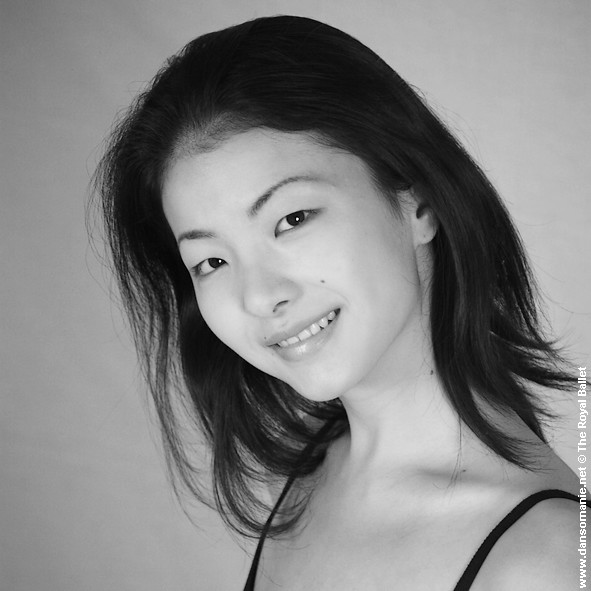
How did you start dancing in Japan?
When
I was 5, my mother wanted me to learn something, and she suggested I
learned piano or dance - something artistic. From out of nowhere I said
dance, but I had never really thought about it before. My mom took me
to ballet classes around Fukuoka, where we lived, and I recall the
first time I went to a ballet class: it's a clear picture in my mind, I
remember everything, I was so enthusiastic.
Who were the most influential teachers in your training?
Daini Kudo is one. He is based in France, and I met him when I was
14 – he was then about to open a ballet school for Japanese
students in Paris. I had always wanted to go to the Paris Opera Ballet
School, and that's why I went to France. Elisabeth Platel was such an
inspiration at the time – I wanted to go there and study her
elegance, to be like her.
Mister Kudo actually taught me everything, not just dance. He is a
great person – he always said that you have to be a good person
as well as a good ballet dancer. I learnt that from him, and I still
keep telling that to myself. He also gave some really tough work in
class, but he made me feel really strong, he pushed me to do lots of
competitions, in France and elsewhere. I did the Concours de Paris in
2000 – I was only 16, full of energy, and I loved every moment of
it, it was good to see dancers from everywhere.
I met Dominique Khalfouni there, and I started working with her as
well. She mainly gave solo classes, and suggested a lot of things
– we learnt a lot of variations, both classical and from the
repertoire of Roland Petit, Carmen, Notre-Dame de Paris... I hope to have a chance to dance these ballets some day.
What did you learn specifically in France?
I was focusing on everything, but particularly
footwork – you just have to have great feet in Paris. I also had
classes once a week with Christiane Vlassi, who has since retired from
the Paris Opera Ballet School.
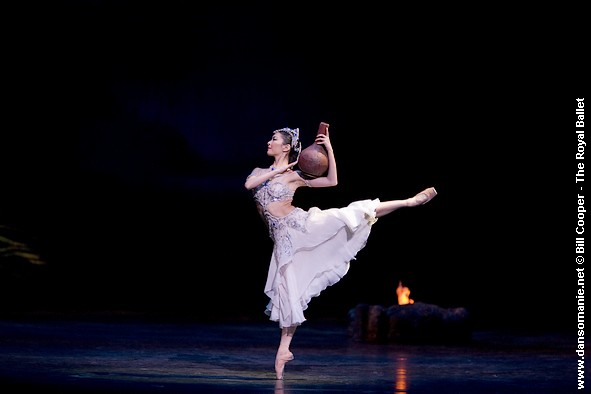
Yuhui Choe in La Bayadère (Nikiya)
Can you tell us about the Prix de Lausanne?
It was a great experience – it changed my life, because I was
desperate to get into the Paris Opera, I was completely focused on
that. But the timing was just off, and I never quite had a chance to go
there. I wanted to try the external Concours, but it just didn't work
out somehow. After the Concours de Paris I got an offer from the Boston
Ballet, but I was too young to get a visa – that's why I tried
the Prix de Lausanne. Getting into the Royal Ballet was probably the
best thing for me. When I first came, I wasn't quite sure if it was a
mistake or not, I didn't know enough about the company. But it was the
right decision.
You won the Contemporary Dance Prize as well – did you have any contemporary experience?
I briefly did some Martha Graham technique in Japan. I absolutely loved
working on the contemporary part of the competition – I never
really knew that side of me until then. I did a piece called Homer, by Connie Jansen, and her assistant came to the Prix de Lausanne to give me some advice.
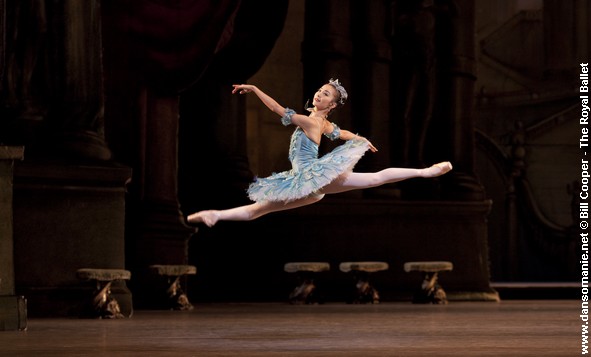
Yuhui Choe in Sleeping Beauty (Princess Florine)
What was the prize, a week-long contemporary workshop, like?
It was very, very interesting, because I was a pure classical ballet
student. I went to Amsterdam, which is quite a unique city –
everything is about freedom – and all the dancers were
experienced professional contemporary dancers. I was the only one who
didn't have a clue. I remember I cried the first day, thinking I
couldn't do it, but everyone was very supportive, we made pieces
together... I also had a workshop with Anouk Van Dyke, and it was a
great experience. That time made me want to do some contemporary work
later on, but when I came to London, I had the opportunity to do
classical work – and you can only do that for a limited amount of
time, unlike contemporary.
Did you enjoy the years you spent in the corps de ballet when you arrived as a Prix de Lausanne apprentice, in 2002?
It was really difficult because I couldn't speak English, I didn't
really know anyone, and Mr. Kudo was like a parent to me – he
gave me everything, he supported me, he was always there for me. He and
his wife were like my second parents. I didn't have anyone when I came
here, I was all by myself. But after perhaps three months I got used to
it, and started enjoying it more. It was a big shock to have to deal
with everything, but it turned out well.

Yuhui Choe (Sugar Plum Fairy) and Steven McRae (The Prince) in The Nutcracker
How did you fit into the Royal Ballet style when you arrived?
At that time we had a ballet mistress called Gail Taphouse, and she
trained me – after every rehearsal she would spend five minutes
with me and go through the ports de bras, etc. She was really keen to
stress what I had to do at the Royal Ballet. I was also very lucky to
do some private coaching with Lesley Collier. She taught me the older
style, and I watched other people a lot. It came naturally to me, I
think it suits my style, which I hadn't realized before – the
bending, bending, more bending! It became natural after a while.
What was your first breaktrough in the company?
I was an apprentice for a year, and the following year, in March 2004, I got to learn Princess Florine for Natalia Makarova's Sleeping Beauty.
Makarova obviously liked me, and she gave me a few shows, although the
"Russian" corrections were slightly confusing. When I turned up for the
first rehearsal, she asked me what I was doing there, and I said I was
learning the role. And just a minute before the end of the rehearsal,
she said: "You – do solo". I
did it quite well, and she just said: "OK. You have quite a lot to work
on, but it could be good." She worked with me on the solo afterwards,
she wanted very particular ports de bras.
The new production [created in 2006] is more English, and in a way, the
choreography feels more awkward, though once you have it in your body
it's fine. The Royal Ballet style is sometimes quite awkward –
your body wants to go somewhere, but it has to go another way. For me
though, Princess Florine is a very special role, and now that I feel
more confident, I can relax and play with it. The company was very much
behind me for my first performances, even the students from the Royal
Ballet School – Steven McRae was actually watching from the wings!
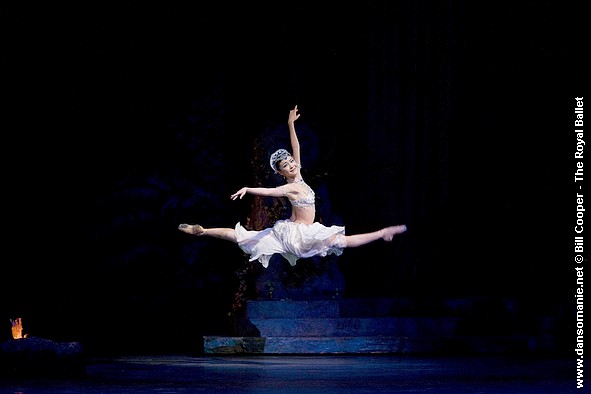
Yuhui Choe (Nikiya) in La Bayadère
What other roles have you enjoyed most so far?
I have to say Nikiya, and Dances at a Gathering. La Bayadère
was the first full-length ballet I danced, and again, it was Natasha
[Makarova]'s production. She is a very special lady. I learnt a lot
from her. It just hit me when I got on stage that I was doing the
principal role – I hadn't really felt it until then.
For Dances at a Gathering,
Alina Cojocaru and Marianela Nuñez both got injured and they
didn't have anyone else for the Pink girl. It was quite short notice,
but I had enough time to rehearse properly. Because I replaced two
girls, I also had to dance with four different partners, including
Carlos Acosta, and I loved it. It was my first time dancing Jerome
Robbins, and at each rehearsal, when the Robbins repetiteurs came, I
learnt so much about him, about how he wanted this piece to be –
normal. As soon as I had a funny smile on or kicked my leg high, they
said no – just be natural, enjoy, listen to the music from your
heart.
Do you work with a specific coach nowadays?
I do work a lot with Lesley Collier, and it is
always quite special. Since Ashton and MacMillan both passed away, I
can't have direct corrections from the choreographer in their case -
but learning from someone like Lesley, who worked with them and created
many roles, is a big thing. I listen to her, to what Ashton wanted, and
I try to create my role this way. Her ports de bras are very nice, too,
and I wish I could steal them from her!
I also love working with Monica Mason. She has got a great eye, she just knows what I need.
Do you feel at ease in the Ashton repertoire?
I think it suits me, it suits my body, and I like his style. I have done lots of Ashton corps de ballet work, as well as Les Patineurs. I very much look forward to dancing La Fille mal gardée and Cinderella in April.
You will also dance in the new ballet Jonathan Watkins is creating for the Main Stage, in February?
Jonathan and I are very good friends – he used to live next door
to me. We also joined the Royal Ballet at the same time. He has been
making pieces since his first year with the company, and I have been in
almost every single one – everyone thinks I'm his muse! I
have seen his progress, and I'm really excited now for his first piece
on the Main Stage.
How do you work in the daily class?
I still have a slight problem with turnout, so I do Pilates and check
things that I specifically have to work on. My right leg and left knee
are quite lazy, so in class I'm always aware of it, and I try to avoid
developing too many habits. I also try not to get injured – when
I was 15 I had a stress fracture in my metatarsal bones, but I kept
dancing, and soon it was both feet. I was on crutches for a month. Now
I try to find time to rest, to relax, and I also do acupuncture and
massages.
What roles would you most like to dance?
Juliet – I'm actually understudying it at the moment. I guess it's every girl's dream. I'm also doing MacMillan's Concerto in March – I really want to work on his style, because I haven't done much yet. I was cast for Princess Stephanie in Mayerling, but I couldn't do it in the end.
I'm also lucky to work with Wayne McGregor, and I would love to work
with John Neumeier or Jiří Kylián – I watched
Neumeier's A Midsummer Night's Dream at the Paris Opera, and it's a shame we don't get to do his work here.
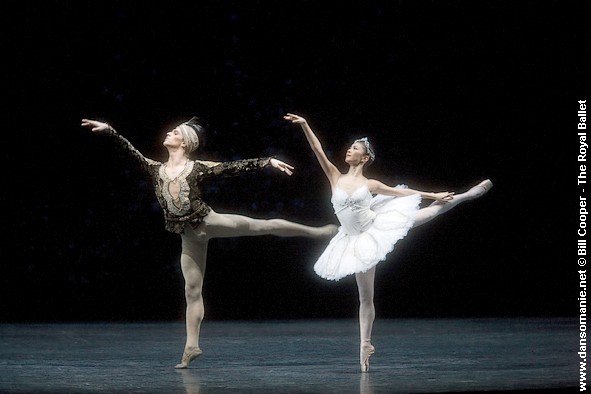
Segei Polunin (Solor) and Yuhui Choe (Nikiya) in La Bayadère
How is it to work with Wayne McGregor?
The first creation of his I was involved in was Infra,
and it was quite a shocking experience – I didn't really know how
he worked. The first few rehearsals were quite bad. I panicked, because
his stuff is really crazy, and you have to do it right now. After a few
months though it got into my body, and I was able to enjoy it more. I
know what he wants – we have quite a good connection now.
What is your relationship to music?
I don't play an instrument, but I'm always aware of music. When I was
little I did some piano, but I hated it, I fell asleep during the
classes – I'd like to learn more now. I love hearing the music,
being in the music, I can play with it so much, especially with the
orchestra. You can always hear little notes and pick them up. I don't
like to set a tempo with the conductor – I just let him play. I
respect conductors a lot, and I simply respond to the music, I feel it.
Ashton is particularly musical, even if it's hard to hear it at times.
Do you have any favourite partners?
Not really, because I don't have any specific partners. I'm still
finding myself, and I like working with everyone, it inspires me so
much.

Yuhui Choe (Nikiya) in La Bayadère
Are there any dancers you look up to?
Two of my favourite dancers are Alina Cojocaru and Zenaida Yanowsky.
But I have so much respect for every single principal in the company. I
felt really sad on the day of Miyako Yoshida's last Sugar Plum Fairy
– I grew up with videos and DVDs of her, especially The Nutcracker,
and she has been doing the first night seemingly every year since I
arrived in London. It was so natural I had almost forgotten how special
she is, until now.
Do you have plans to go back and dance in Japan, too?
I've only done galas so far, but it would be nice to go and guest in Japan.
What inspires you when you prepare a role?
For Nikiya, just watching Natasha [Makarova]'s
ports de bras was quite something... In general everything inspires me,
not just in the studio – I go to the theatre whenever I can. I
also go to Sadler's Wells rather often.
What do you do on your days off?
I sleep! I live near the Columbia Flower Market, so I go there when I
can on Sundays. I like going to markets around London, going to the
restaurant, shopping – very normal things. I also listen to
music, we always have some on in the changing room, and I particularly
like The Killers.
What would you do if you weren't a dancer?
I think I would be married and have children by now! I want that at
some point. That's the one thing I want after this career: my own
family.
Yuhui Choe - Interview by Laura Cappelle
Yuhui Choe (Sugar Plum Fairy) in The Nutcracker
Interview done on december 4th. 2009 - Yuhui Choe © 2010, Dansomanie
|
|
|



















